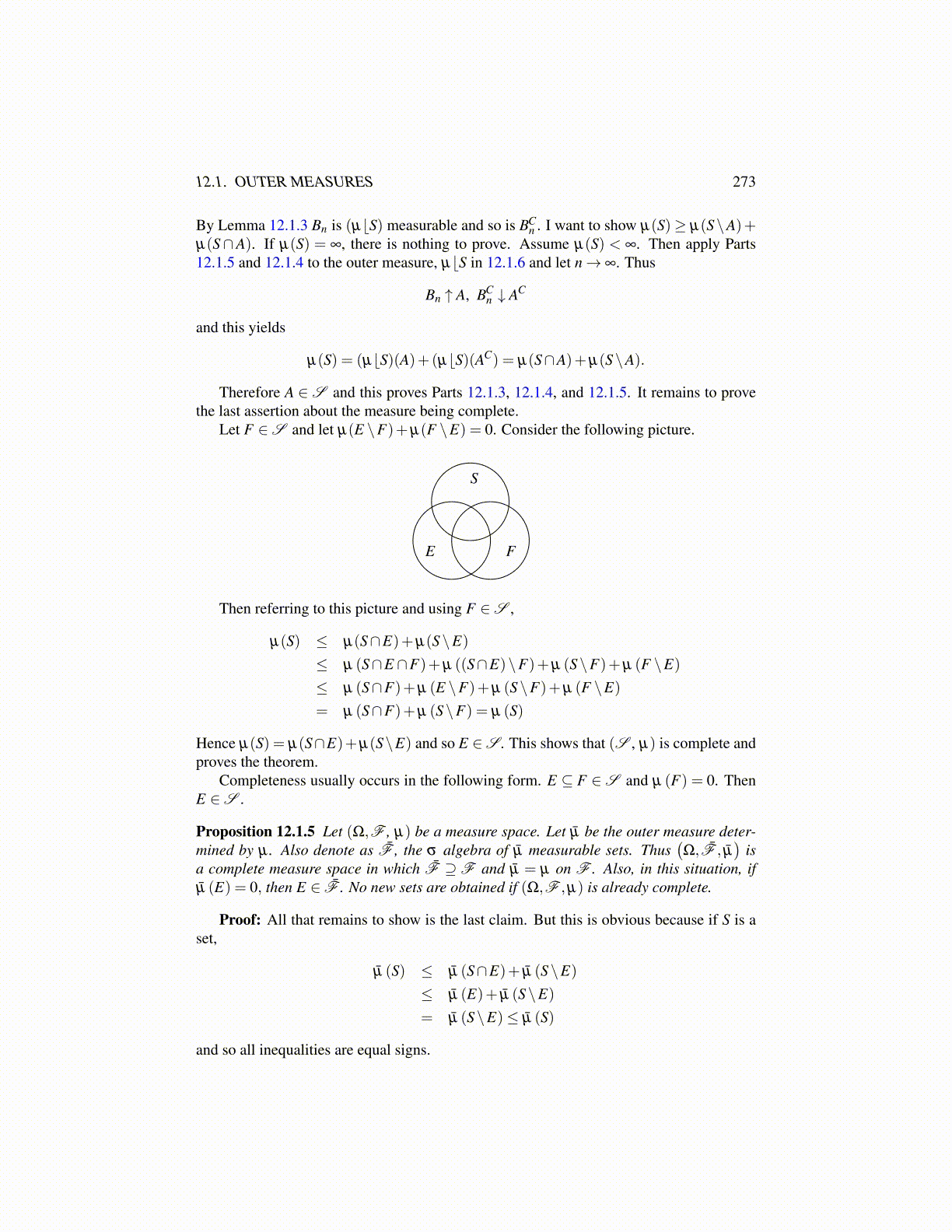
12.1. OUTER MEASURES 273
By Lemma 12.1.3 Bn is (µ⌊S) measurable and so is BCn . I want to show µ(S)≥ µ(S\A)+
µ(S∩A). If µ(S) = ∞, there is nothing to prove. Assume µ(S) < ∞. Then apply Parts12.1.5 and 12.1.4 to the outer measure, µ⌊S in 12.1.6 and let n→ ∞. Thus
Bn ↑ A, BCn ↓ AC
and this yields
µ(S) = (µ⌊S)(A)+(µ⌊S)(AC) = µ(S∩A)+µ(S\A).
Therefore A ∈S and this proves Parts 12.1.3, 12.1.4, and 12.1.5. It remains to provethe last assertion about the measure being complete.
Let F ∈S and let µ(E \F)+µ(F \E) = 0. Consider the following picture.
E F
S
Then referring to this picture and using F ∈S ,
µ(S) ≤ µ(S∩E)+µ(S\E)
≤ µ (S∩E ∩F)+µ ((S∩E)\F)+µ (S\F)+µ (F \E)
≤ µ (S∩F)+µ (E \F)+µ (S\F)+µ (F \E)
= µ (S∩F)+µ (S\F) = µ (S)
Hence µ(S) = µ(S∩E)+µ(S\E) and so E ∈S . This shows that (S , µ) is complete andproves the theorem.
Completeness usually occurs in the following form. E ⊆ F ∈S and µ (F) = 0. ThenE ∈S .
Proposition 12.1.5 Let (Ω,F , µ) be a measure space. Let µ̄ be the outer measure deter-mined by µ . Also denote as F̄ , the σ algebra of µ̄ measurable sets. Thus
(Ω,F̄ , µ̄
)is
a complete measure space in which F̄ ⊇F and µ̄ = µ on F . Also, in this situation, ifµ̄ (E) = 0, then E ∈ F̄ . No new sets are obtained if (Ω,F ,µ) is already complete.
Proof: All that remains to show is the last claim. But this is obvious because if S is aset,
µ̄ (S) ≤ µ̄ (S∩E)+ µ̄ (S\E)
≤ µ̄ (E)+ µ̄ (S\E)
= µ̄ (S\E)≤ µ̄ (S)
and so all inequalities are equal signs.